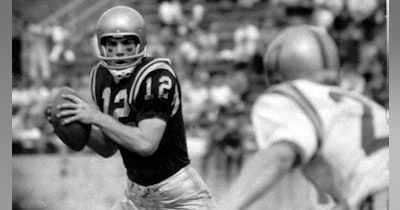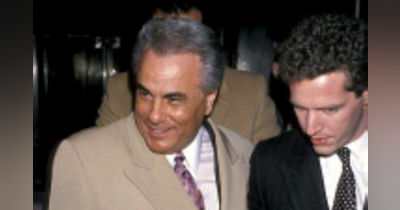I bolted from my office and ran into the adjacent room we had nicknamed the fishbowl owing to the wall of indoor windows allowing any passersby to peer in on the analysts doing their work. I was hoping for some answers as my heart was pounding as it did on that fateful September day just years before.
Part of the construction design of the “The Rock” was the high-mounted TV screens so we could all see “what” was going on. Now these screens were all displaying the same images from different media outlets. A plane was floating in the middle of the river. Could it be another terrorist attack?
One of our senior analysts with his bag slung over his shoulder approached me in the space between the cubicles. Surely, he had an answer. He looked back at the screen for a moment and then continued on by me. I called out to him wondering to myself where he could be going during such a time of sure crisis. He responded as if I asked the question “how” did you make out, “I finished my crime mapping, see you tomorrow.”
We all know the story of Sully, the hero pilot who saved his crew and passengers from certain death after a bird strike forced him to land his Airbus A320-214 in the Hudson River. But what you don’t know is what that event represents to me from an organizational perspective when I think back on it.
You see when that analyst walked by me on his way home, it was apparent that we - the leaders of the state’s fusion center- had not done our job. We did not instill in him what Simon Sinek has preached about for over 15 years: the need for organizations to understand their “why”. That analyst knew “what” and “how” he did his job every day, but he did not understand “why” the fusion center was established: to understand the unfolding threat picture. We were to blame for not painting that vision.
Could “Starting with Why” help disrupt the shooting cycle?
Years later, our nation finds itself plagued by cyclical shootings in which today’s victims of gun violence become tomorrow's trigger-pullers thanks to advances in medical technology and an abundance of neighborhood scores to settle.
In a world driven by actions and results, the concept of Sinek’s "Starting with Why" has emerged as a convincing philosophy that delves into the heart of motivation and inspiration. At its core, this concept empowers individuals and organizations to identify their fundamental "why" - their purpose and beliefs - before addressing the "how" and "what." Starting with “why" requires us to recognize our deep-rooted purpose, the reason behind our actions, and the driving force that compels us to do what we do. If our analyst mentioned above understood the fusion center’s “why”, he would have left his backpack on his chair and engaged in the events that were unfolding before him regardless of completing his daily assignment.
Preventing, solving, and prosecuting gun crime requires the right blend of investigators, forensic technicians, and prosecutors spread out over municipal, state, and federal authorities.
This triumvirate of interdependent stakeholders is what makes crime gun intelligence capabilities both advantageous in combating violent crime as well as challenging to establish on the front end and sustain on the back end. These dissimilar entities – I refer to as the primary “food groups” required to address gun crime - have their own language, specialization, skills, and mission expectations.
While diversity represents the strength of a gun violence program it can also be a significant hindrance in terms of harnessing the disparate entities. A constructive capability requires participation from police commanders, analysts, and investigators. Moreover, it also requires the technical skills and equipment of forensic laboratory personnel and the legal acumen of state and Federal prosecutors. In other words, the stakeholder groups must think and act together to achieve success. To that end, to pull these diverse stakeholders together, who have entirely separate missions, they must find a shared purpose to align them.
So how do you bring these disparate entities to combat gun violence?
You start with “why!”
Conventional thinking may lead us to focus on the "what" that includes products and services, or the "how" that includes strategies and processes. Yet, when we center on the “why” we bring contrasting groups together and direct our collective attention toward an end state that the entire teams of teams can line up behind.
Disrupting the shooting cycle may mean different things to the investigator, forensic technician or prosecutor. These differences can create siloed thinking and confusion. A shared purpose aimed at seeking justice for victims, resolution for families, and peace to affected communities can bridge differences and align all efforts toward developing and executing sustainable and comprehensive crime gun intelligence capabilities.
At its core, this shared purpose creates an understanding of the underlying purpose, cause, and beliefs that can inspire action and fuel the progress needed to address gun violence. It is the source of intrinsic motivation among the diverse stakeholders. It is the North Star needed to guide them through the difficult and complex challenges associated with addressing gun violence.
Captain Chesley “Sully” Sullenberger was on his own when he maneuvered his way down onto the Hudson. His practiced skills enabled him to avert a disaster. Combating gun violence on the other hand requires more than just a savvy experienced pilot or one analyst producing crime maps. It instead requires the influence of a shared purpose that can promote collaboration among a sundry of practitioners while energizing them to think and act together on behalf of the victims of gun violence and its impacted communities.



